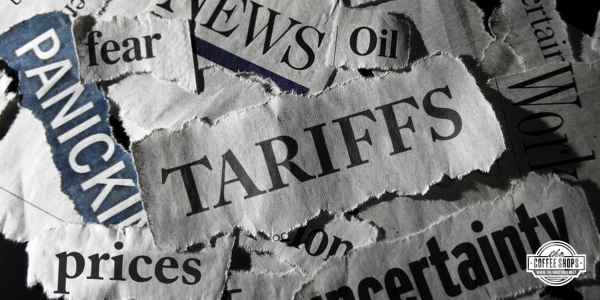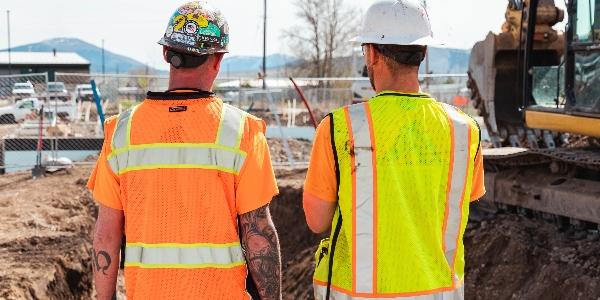UP TO THE MINUTE
Navigating the impact of tariffs on the roofing industry: Lessons from the past and preparing for the future

By Cotney Consulting Group.
The historical and potential future impacts of tariffs serve as a reminder that while these measures aim to protect domestic industries, they often introduce new challenges.
The roofing industry, a critical component of the construction sector, has continuously adapted to evolving challenges, including economic downturns and material shortages. A recurring issue that has significantly impacted the industry is the imposition of tariffs on imported goods. With proposed tariffs for 2025 looming, roofing contractors must understand the historical effects of tariffs and the potential consequences they might face in the near future.
While tariffs are often implemented to protect domestic industries, they can have unintended consequences that ripple through sectors like construction and roofing. From increased material costs to reduced project volumes, tariffs can pose serious challenges for contractors. This article explores the historical significance of tariffs on the roofing industry and offers strategies for contractors to mitigate the potential impact of the 2025 tariffs.
A historical perspective: Tariffs and their impact on roofing and construction
The U.S. government has long used tariffs to protect domestic industries from foreign competition. However, history has shown that these measures can also disrupt industries that rely on imported goods, including roofing. By examining past tariff implementations, we can gain insights into the potential impact of future tariffs on the roofing industry.
The early 19th century: The panic of 1819
The Tariff of 1816 was one of the first protective tariffs implemented in the United States. While it aimed to protect domestic industries from British competition, it also raised the cost of imported construction materials, including those used in roofing. As the Panic of 1819 unfolded, economic instability led to reduced construction activity and the roofing industry experienced significant slowdowns. This period demonstrated how tariffs and economic downturns could halt progress and limit contractor opportunities.
Mid-19th century struggles: The panic of 1857
The Tariff of 1857 lowered tariffs, which might have seemed beneficial for industries reliant on imported materials. However, this abrupt change destabilized government revenues and increased competition for domestic manufacturers. The roofing industry experienced price volatility for materials like copper and tin, making planning and budgeting difficult for contractors. This period highlights roofing professionals' challenges when tariffs fluctuate, creating uncertainty in material costs.
Late 19th century woes: The panic of 1893
The McKinley Tariff of 1890 raised tariffs to historic highs, driving up the cost of imported materials. When the Panic of 1893 hit, roofing contractors faced a perfect storm of high material costs and reduced demand. Projects were canceled, job competition intensified and contractors struggled to remain profitable. This period is a reminder that high tariffs and economic instability can severely impact the roofing industry.
The Great Depression: A perfect storm
The Smoot-Hawley Tariff Act of 1930, implemented during the onset of the Great Depression, imposed the highest tariffs in U.S. history. This act significantly increased the cost of imported goods, further stifling the construction and roofing industries, which were already declining due to the economic downturn. Many roofing businesses struggled to survive and the combination of tariffs and an economic slowdown created a harsh environment for contractors.
Recent challenges: Tariffs during the first Trump administration
In 2018, the roofing industry faced significant challenges due to tariffs imposed by the Trump administration. A 25% tariff on imported steel and a 10% tariff on aluminum directly raised the cost of essential roofing materials, including metal panels, fasteners and structural components, increasing expenses across the board. Adding to the strain, the U.S. Commerce Department imposed tariffs on Canadian lumber, a key material in residential and commercial construction. Lumber prices surged by nearly 80%, driven by tariffs, transportation slowdowns and other factors. These cost increases exacerbated housing affordability issues, pushing up the prices of new homes and renovations and forcing contractors to pass the burden onto consumers.
Despite these measures intended to protect domestic producers, U.S. lumber production did not expand sufficiently to meet demand and Canadian producers remained profitable. Roofing contractors faced a double hit as both steel and lumber, critical materials in the sector, became more expensive. The rising costs caused project delays, squeezed profit margins and created market uncertainty. Housing starts never returned to pre-tariff levels as builders struggled to absorb and manage these increased expenses. For roofing professionals, the combination of tariffs on steel, aluminum and lumber underscored the broader economic challenges, making it increasingly difficult to budget and plan for future projects in a volatile market.
The present threat: Proposed tariffs for 2025
As the roofing industry looks ahead to 2025, proposed tariffs pose a significant threat to contractors. These include a 10% across-the-board tariff on all imported goods and a 60% or higher tariff on imports from China, a major supplier of roofing materials, chemicals and components. Key materials such as asphalt shingles, metal roofing, synthetic underlayments and fasteners are at risk of becoming prohibitively expensive due to the increased costs associated with importing these goods.
Potential industry impact
The proposed 2025 tariffs would have far-reaching implications for the roofing industry, affecting material costs, project volumes and profit margins. Here are several potential impacts contractors may face.
- Increased material costs: Roofing materials typically account for at least 35% of a project's total cost. With tariffs expected to raise material prices by up to 60%, the overall cost of roofing projects will rise significantly. Materials such as steel, aluminum, polymers and chemicals essential for roofing components will become more expensive, driving up project costs and squeezing profit margins for contractors.
- Reduced project volume due to price densitivity: As project costs increase, demand for roofing services may decrease. Studies show that for every 1% increase in construction costs, project volume can drop by 1-2%. If tariffs cause material costs to rise by 20-30%, the roofing industry could see a 20-40% reduction in project volume. This decrease would significantly impact revenue and job opportunities for contractors.
- Estimating lost revenues: The U.S. construction market was valued at approximately $1.6 trillion in 2023, with roofing accounting for roughly $25 billion of that market. Assuming a 20-40% decrease in project volume due to tariffs, the roofing sector could experience revenue losses of $5-10 billion. This would represent a significant setback for the industry, which faces challenges from rising labor and material costs.
- Supply chain disruptions and project delays: In addition to direct financial impacts, the proposed tariffs could disrupt supply chains, leading to project delays and increased overhead costs. Finding domestic alternatives to imported materials may be difficult and roofing contractors may need to stockpile materials before the tariffs, adding to their expenses. Delays caused by material shortages can lead to penalties, increased labor costs and project overruns, compounding the financial strain on contractors.
Broader economic ripple effects
The effects of these tariffs will extend beyond the roofing industry, impacting the broader economy. Increased construction costs could worsen the housing affordability crisis, as higher prices for roofing and construction materials drive up the cost of new homes and repairs. Additionally, inflation could rise as material costs increase, making it more expensive for businesses to operate. U.S. roofing contractors may also find themselves at a competitive disadvantage compared to foreign firms not subject to similar tariffs.
Preparing for the potential impact
While the proposed tariffs pose significant challenges, roofing contractors can take proactive steps to mitigate their effects.
- Diversify supply chains: Contractors should seek alternative suppliers, including domestic manufacturers, to reduce reliance on imports subject to tariffs. Building relationships with multiple vendors can provide flexibility and help contractors secure better deals.
- Advance procurement: Contractors may want to stockpile essential materials before the tariffs take effect to lock in current pricing. Negotiating long-term contracts with suppliers can also help secure more favorable terms and mitigate price volatility.
- Adjust business strategies: To offset increased costs, contractors may need to adjust their pricing models. Transparent communication with clients about potential cost increases and project delays will be crucial in maintaining trust and managing expectations.
- Advocacy and engagement: Roofing contractors should engage with industry associations and policymakers to advocate policies considering the roofing industry's unique challenges. By participating in discussions and staying informed about legislative developments, contractors can help shape policies that minimize the negative impact of tariffs.
In an industry where material costs, supply chains and economic forces constantly shift, roofing contractors must remain vigilant and adaptable. The historical and potential future impacts of tariffs serve as a reminder that while these measures aim to protect domestic industries, they often introduce new challenges. By understanding the lessons of the past, diversifying supply chains and preparing for the proposed 2025 tariffs, contractors can better navigate the road ahead. Proactive planning and strategic adjustments will be vital to maintaining profitability and ensuring the long-term success of roofing businesses, allowing professionals to continue delivering quality work despite the complexities of an evolving market.
Learn more about Cotney Consulting Group in their Coffee Shop Directory or visit www.cotneyconsulting.com.






















Comments
Leave a Reply
Have an account? Login to leave a comment!
Sign In